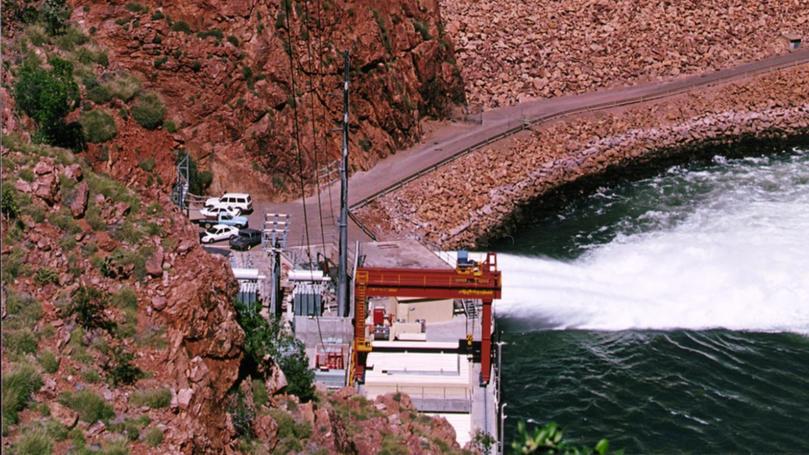
Australia-based climate change advisory and investment firm Pollination Group has partnered with Aboriginal communities in the Kimberley region of Western Australia on a plan to produce green hydrogen.
The East Kimberley Clean Energy Project will utilise the region’s abundant sunshine, fresh water and the Wyndham deep water port to create Australia’s first hydrogen and ammonia production hub powered entirely by renewable energy. Hydrogen and ammonia will be supplied to domestic and export markets.
The project is to be developed under a novel partnership under which the traditional owners of the land, MG Corporation and Balanggarra Aboriginal Corporation (through Balanggarra Ventures), Kimberley Land Council (KLC) and Pollination will be equal shareholders. The shareholders jointly own development company, Aboriginal Clean Energy (ACE) Partnership.
“This project represents a just, ambitious and achievable vision for Australia’s clean energy future,” Pollination head of projects Rob Grant said.
Initial scoping work has been completed and more detailed planning should be complete within 12 months. Pending the completion of a feasibility study and capital raising, construction could start as early as late 2025 with production to begin by the end of 2025.
The first stage of the project will involve constructing a 900MW solar farm, the largest in Australia, and a 50,000 tonne per year hydrogen production facility on MG Corporation freehold land near Kunanurra.
Electrolysis will be used to convert fresh water from Lake Argyle into hydrogen. A 120-kilometre pipeline will be built to transport the gas to Wyndham. At Wyndham, the volatile hydrogen will be converted to ammonia for export and local use, including fertiliser production.
It is planned that the Wyndham ammonia plant will eventually be expanded to 250,000 tonnes per year capacity.
The first stage of the project is designed to leverage existing assets in the region including the Ord River hydro-electric power station and electricity transmission network, the Port of Wyndham − which is well located for exports to Asia − road networks and airport facilities.
“The main requirements for green hydrogen production are clean water, sunlight and renewable energy sources and all are abundantly available in this project,” Grant said.
“Dozens of governments worldwide, many of them in our neighbourhood, have already issued a hydrogen strategy – flagging how critical this resource is going to be as the world moves towards net zero.
“The Australian Government has placed green hydrogen at the heart of its plans to become a clean energy superpower in the future global economy and this is exactly the kind of project that will be critical in making good on that ambition.”
The participating bodies believe the partnership model should ensure that the project will not run into any heritage, native title or environmental stumbling blocks. This should significantly de-risk and shorten development time compared with conventional commercial projects.
“The ACE Partners bring differentiated but crucial individually lived experience and knowledge to this project,” said Cissy Gore-Birch, chief executive of Balanggarra Aboriginal Corporation.
“From cultural heritage, social engagement and remote land management to renewable energy and green hydrogen project and industry experience, the suite of skills required to effectively deliver this ambitious project on traditional lands in the East Kimberley exists only within this consortium.”
MG Corporation executive chair Lawford Benning said the partnership represented an important way forward for traditional owners.
“A focus on First Nations economic empowerment has led groups like ours to reject the historic passive engagement model of receiving royalties for agreeing to give up control of our lands,” he said.
“This project gives us a chance to be active shareholders, understanding the risks and rewards, and making informed decisions about long-term strategic projects on our country. Anything we do must be sustainable, intergenerational and connect culture and heritage.”
Tyronne Gartsone, chief executive of KLC said the partnership represents an entirely new model for First Nations involvement in large infrastructure projects and the clean energy sector and could be replicated across Australia in order to help deliver on the nation’s climate change commitments.
“The recent Melbourne and Queensland University Net Zero Australia report shows that at least 45% of the renewable energy we need to decarbonise our domestic and export energy supply will be located on land that is subject to native title,” he said. “We cannot have a just transition to net zero without First Nations ownership of the solution and projects that ensure we can get there.”
Pollination was founded in 2019 by former corporate lawyer and investment banker Tony O’Sullivan and former corporate lawyer Martijn Wilder. O’Sullivan’s investment bank O’Sullivan Partners was acquired by Lazard Fréres in 2012. Wilder was head of international law firm Baker & McKenzie’s climate law and finance practice for 20 years and played a key role in the establishment of Australia’s clean energy finance institutions.
Investors in Pollination include banks HSBC and ANZ (ASX: ANZ) and investment firm Serendipity Capital.
Image: The Ord River hydro-electric power station.

